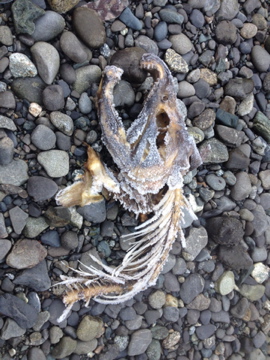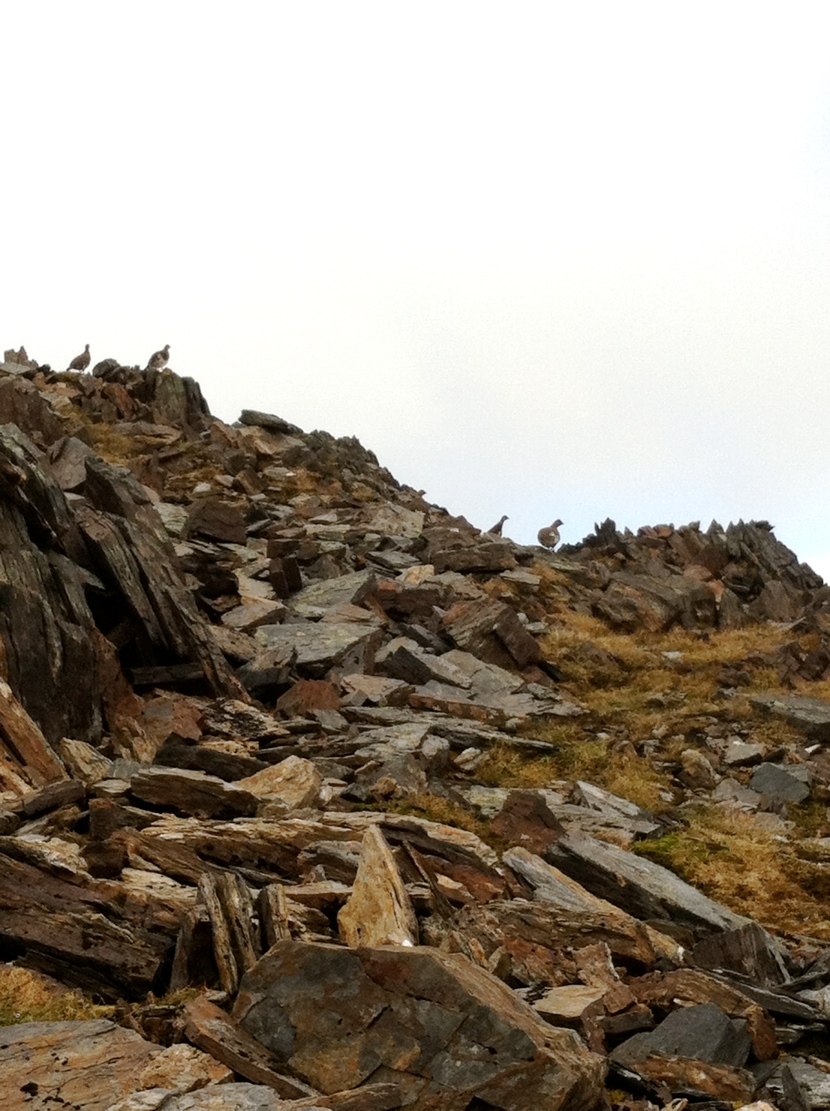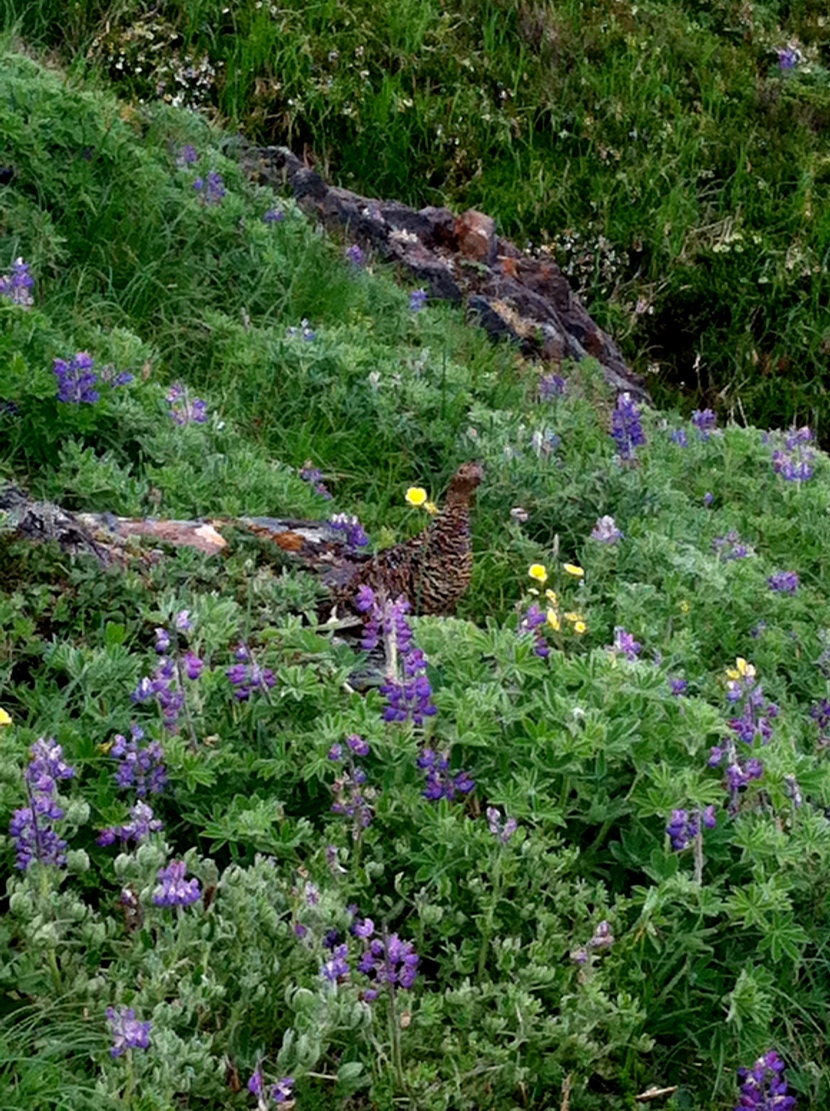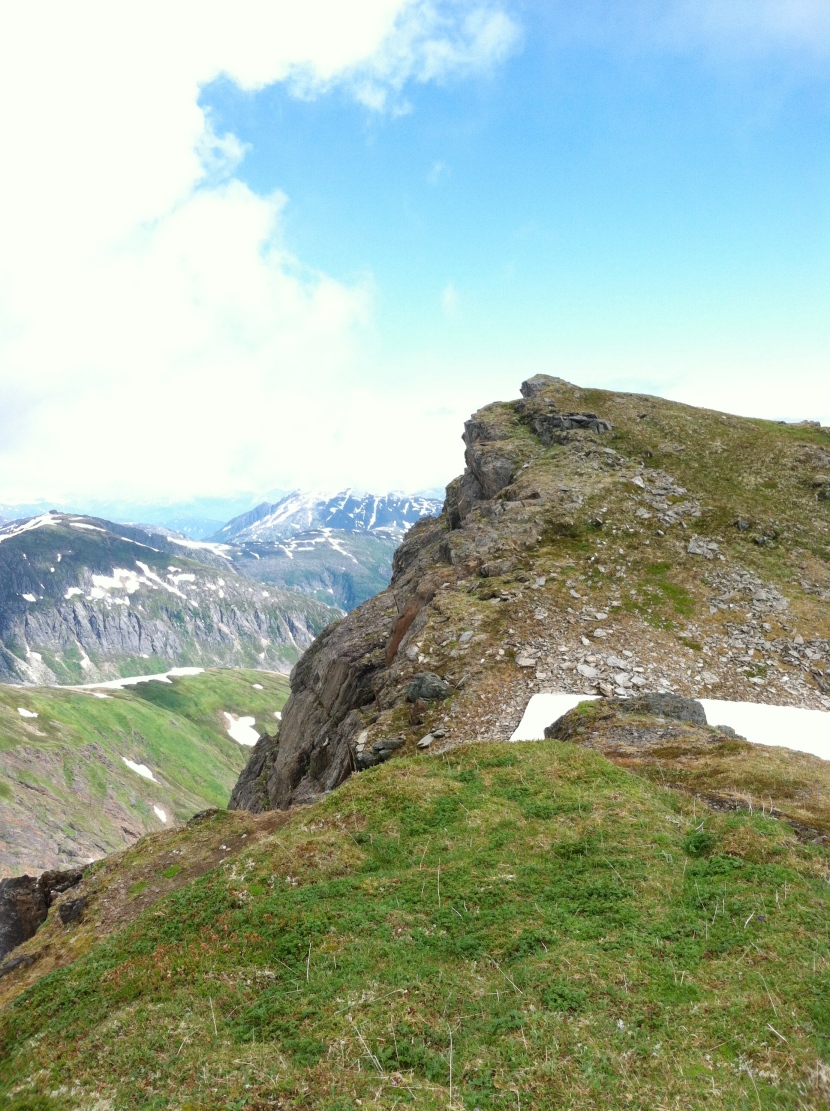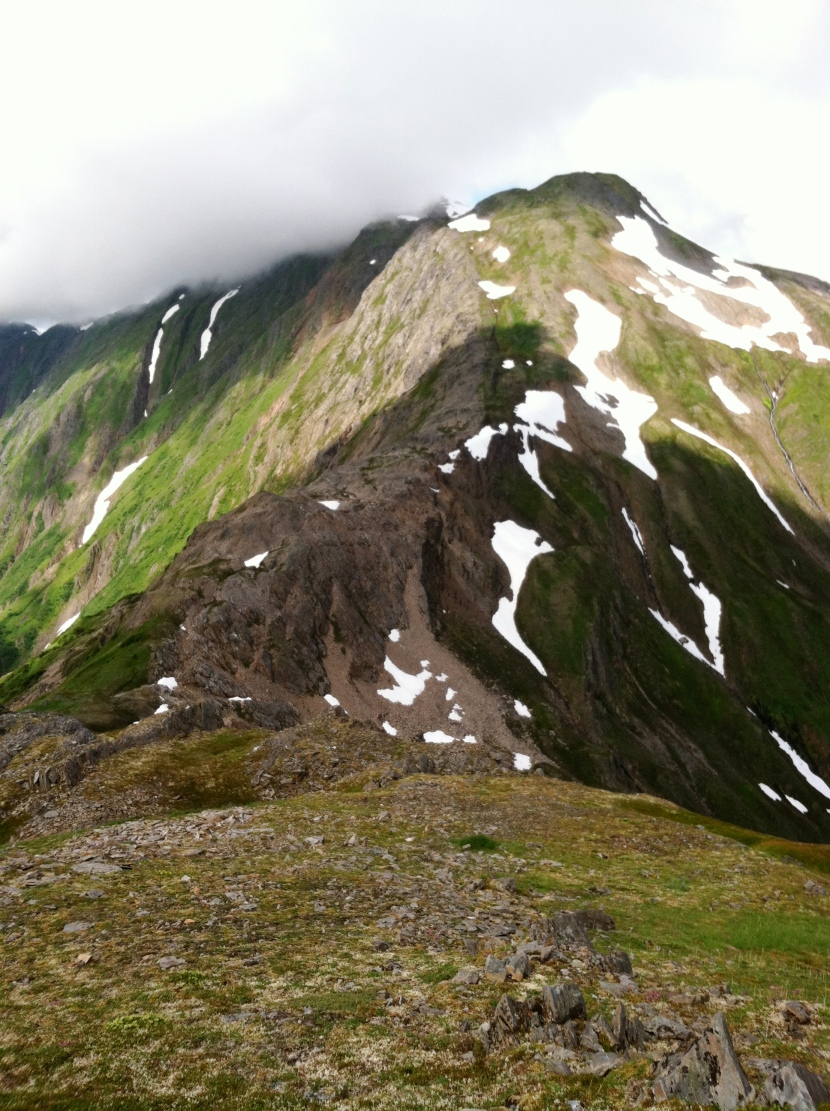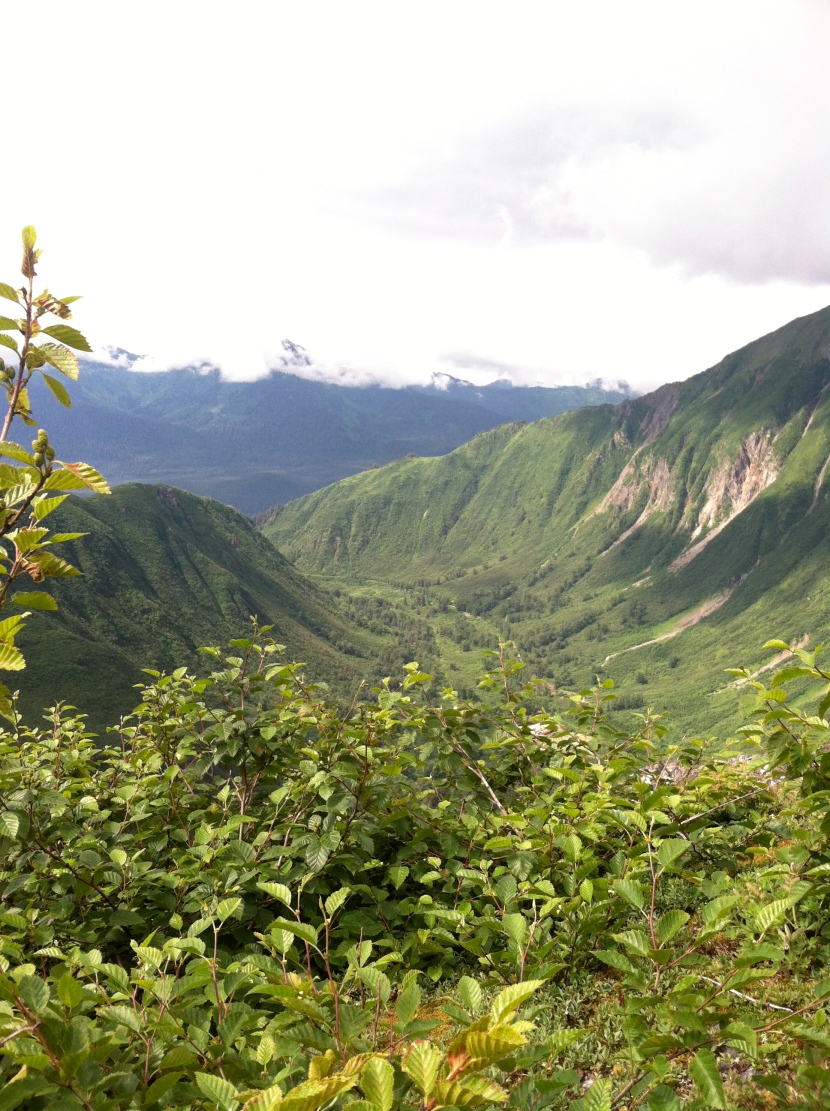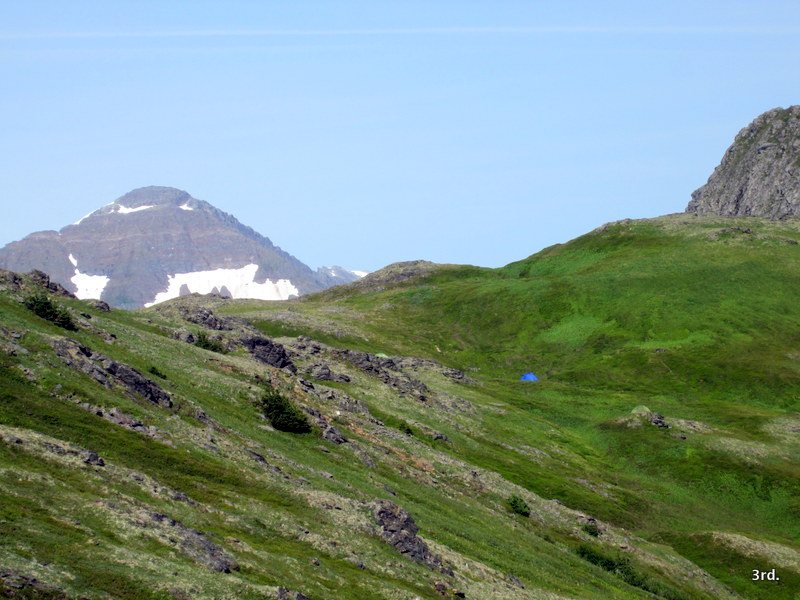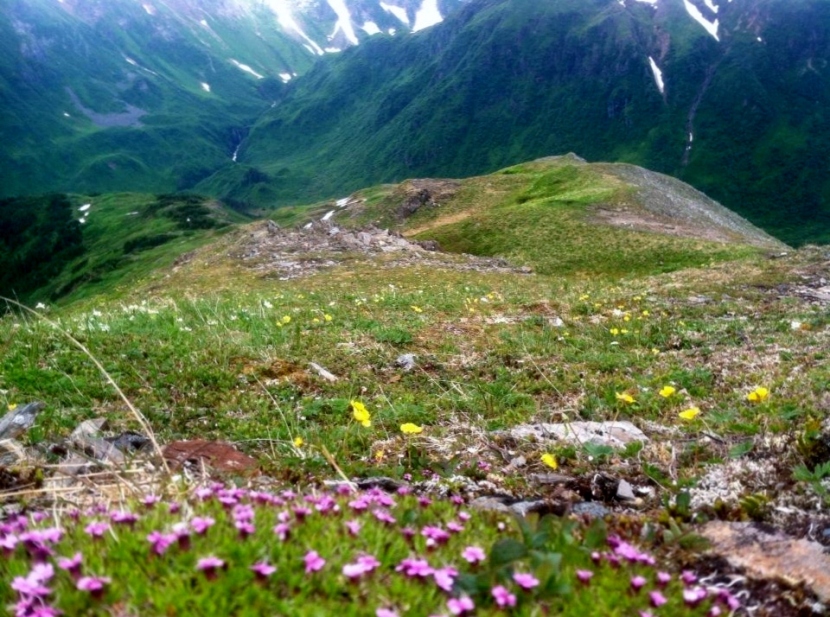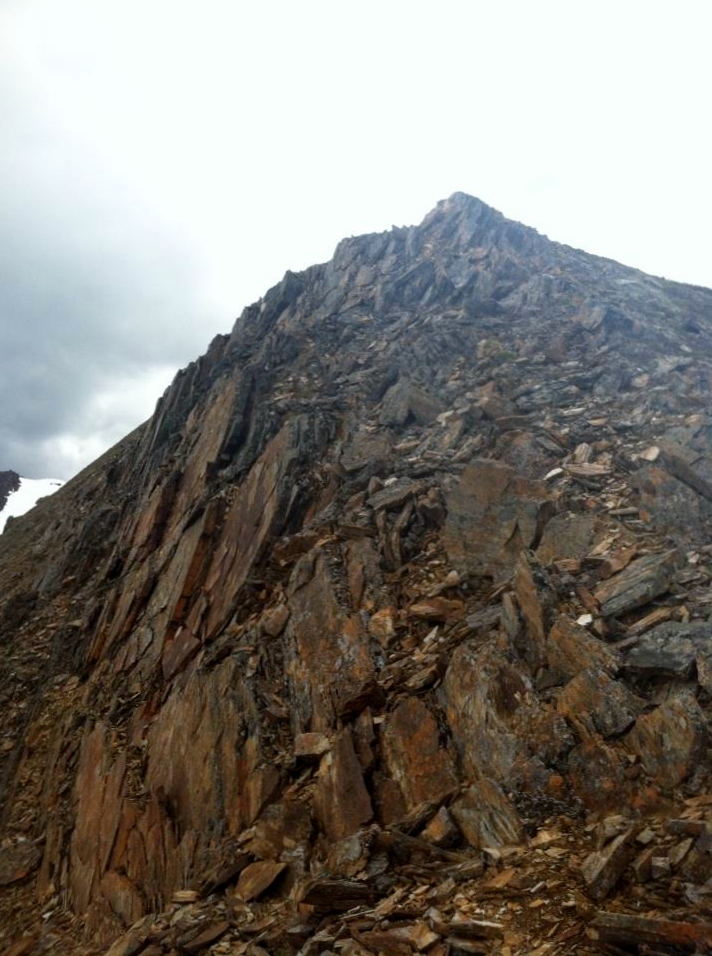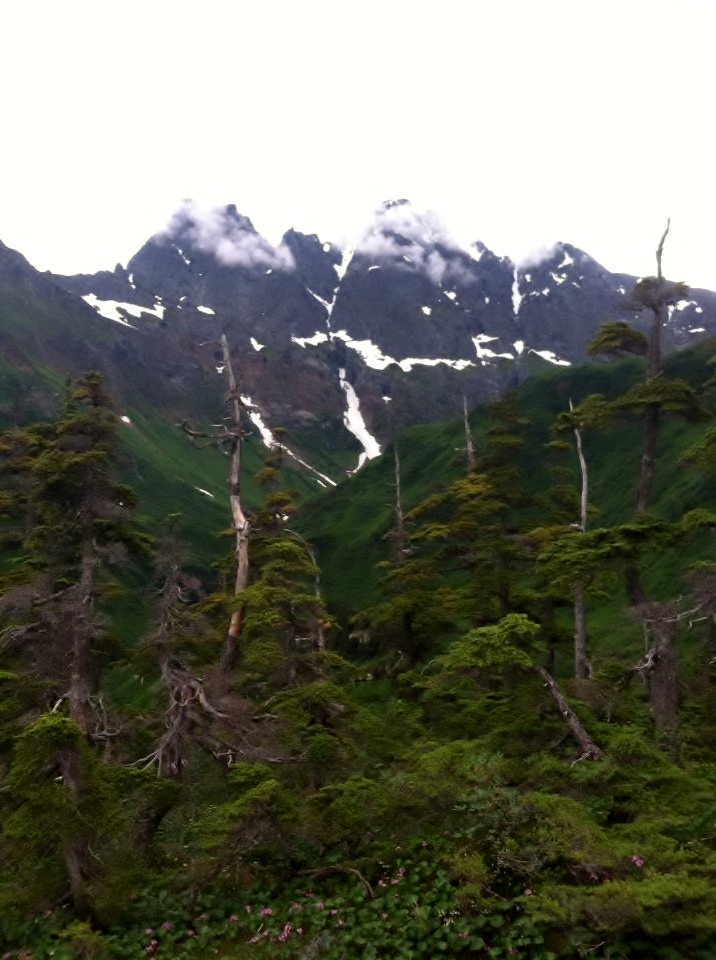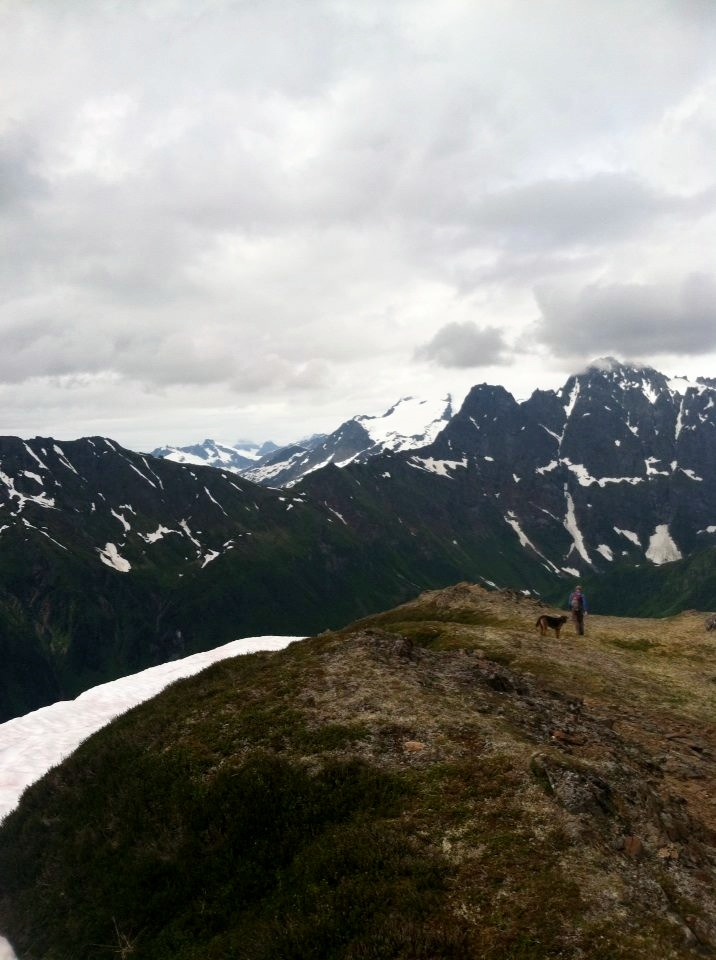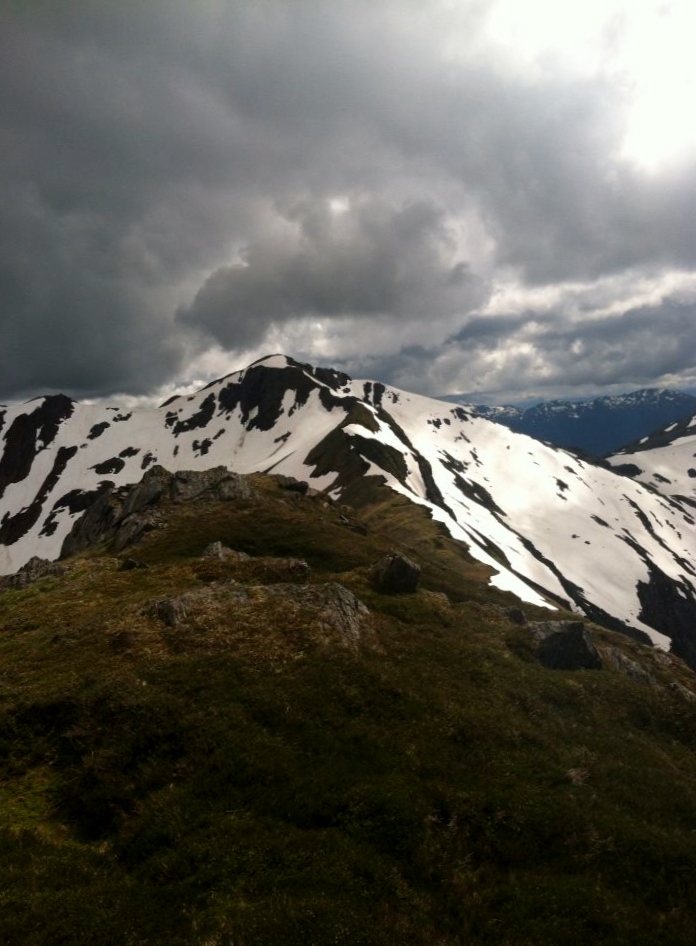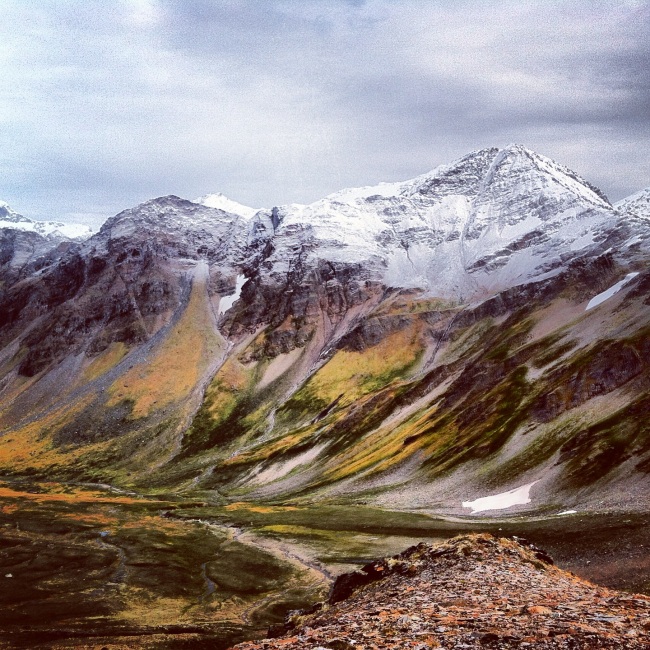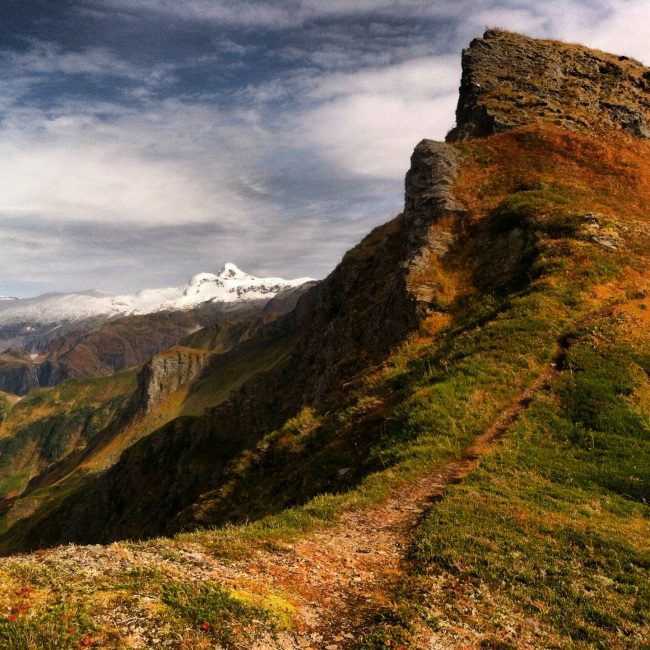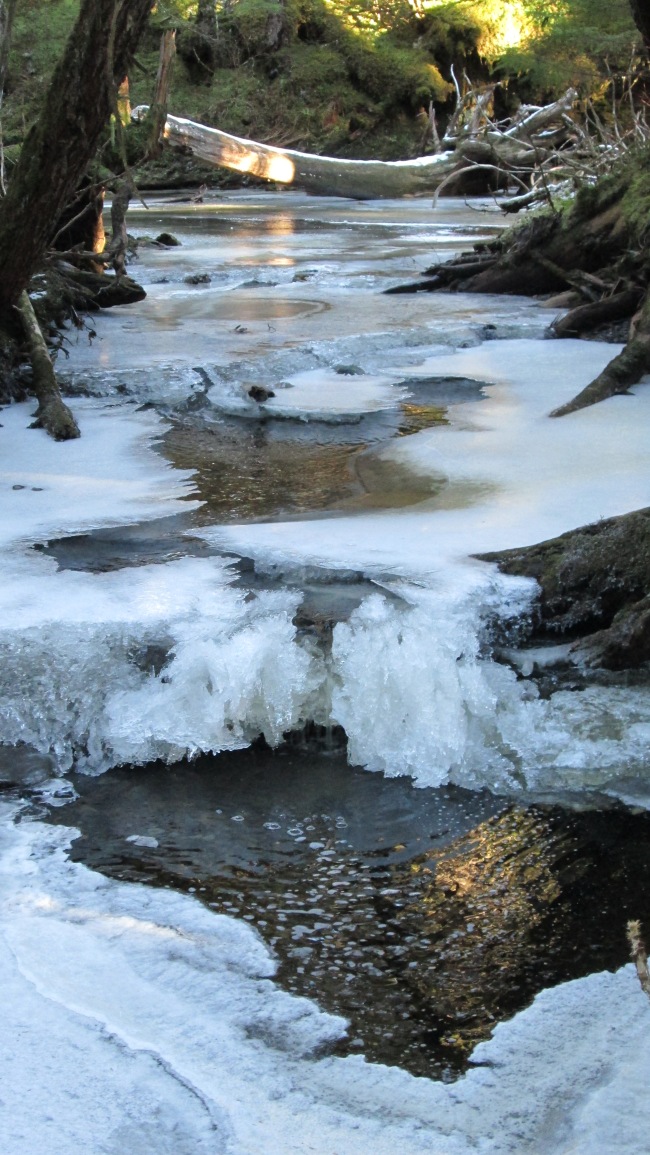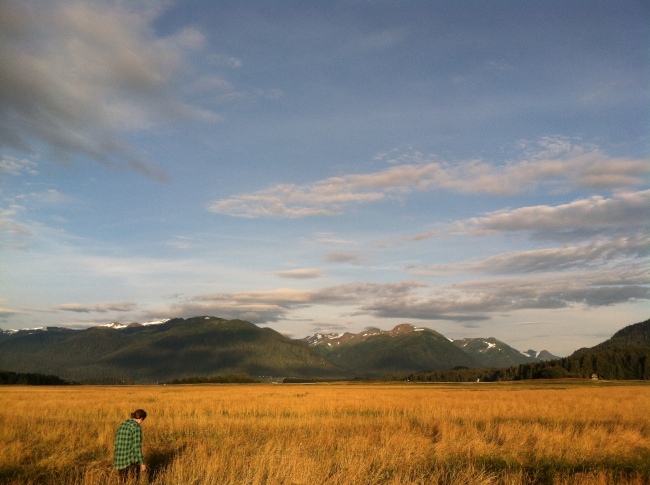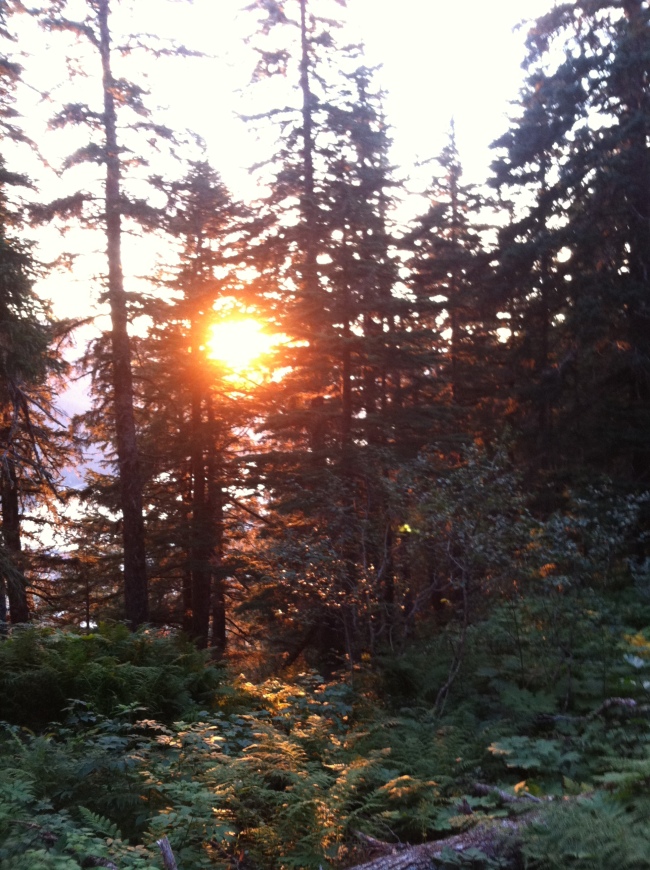Steelhead.
Yakutat is a tiny coastal town dwarfed by the colossal Wrangall-Saint Elias Mountain Range. The Malaspina Glacier exits the mountain range as a glaciofluvial fan the size of Rhode Island. This area has been paleoglaciated. Now free of ice, coast emerges from the sea just like the cushion of a sofa. As the land rises from the sea, mountains that once had been erupting from shoreline now draw further away exposing low coastal land. This relatively new bountiful plain of marsh and forest is home to Brown Bear, Black Bear, Moose, Wolves, Deer, all 5 Salmon species and a little known sea-bound trout called a Steelhead. Steelhead are huge trout with low population counts. The species requires stringent stream qualities to render them habitable by these finicky fish. These characteristics encourage a rabid following of anglers seeking to land the mythical fish. Simply put, if a “Steelhead” remains in a river system rather than migrating to the ocean, then it is called a “Rainbow Trout.” Steelhead are anadromous (ocean-faring) coastal Rainbows. This migration changes their body shape dramatically. They tend to elongate rather than bulk up. Oceans provide more nutrients than rivers gardening a larger body as they gobble up their prey. Steelhead return to spawn in the same native river several times throughout their lifetime. The scientific word is iteroparous. This is relevant to our interest as anglers. Why? Because Salmon are semelparous, they only spawn once. These Steelhead tend to target spawning salmon eggs and various small fish that also feed on them. Now we know what type of a lure to use! They’re still a trout. Once on the hook, they produce the classic fight of a trout. Their hit on a fly is just like that of a rainbow’s, it can be slow and lazy or vigorous and full of fight. These longer hydrodynamic trout have earned their keep in the annuals of prodigious fish.
Our fishing river is the Situk. The Situk is particularly famous for its steelhead return. Approximately 7,000 to 15,000, steelhead return up this twenty-two mile long river to overwinter in the Situk Lake and later spawn in the river’s bed. Three-quarters of the population return in the spring while the other quarter returns in the fall. Rivers that support Steelhead are rare, mostly due to a need for oxygen rich water and deep holes or lakes to winter over. We traveled to Yakutat to target these fall run sea-going trout.
Luckily, after forty straight days of rain and fog, a northern front came through cooling us down and ushering in essential sunlight we desperately need. On this day my friend, Evan, and I fly over Glacier Bay National Park. Views of tidewater glaciers are below us. Recent snow covers the Brady Icefield. Snow fills deep cravasses, leaving a smooth white surface pooling between sharp granitic peaks. We fly over the tide-water John Hopkins Glacier and the confluence of the Ferris Glacier and Grand Pacific Glacier. The Fairweather range radiates with sunlight. Long winter shadows contrast starkly across icefields and glaciers. Our plane routes around the 15,000 foot Mount Fairweather and follows the Gulf of Alaska coastline. I look downward at rows of crashing waves along ochre beaches. Before us, Wrangell-Saint Elias Mountain Range sits wrapped heavily in a perpetual bulky frozen down coat. We fly over the Alsek River. It carries glacier silt creating a vivid sky blue color that braids across a valley of strewn rocks and boulders.
Departing our plane there is a rusting, but elegant, old WWII hangar. Inside there is a fly-shop ran by Bob. Bob is of great help and kind hospitality. After picking up our truck we head out of town to the Situk River. On first sight, the Situk is daunting. High groves of alder choke the tannin infused river. Wall to wall, eight to twelve feet high, alder arms plunge into the cold river, vibrating and shaking in the moving water. There is a saying about Steelhead: “it is the fish of a thousand casts.” In this case, it was going to be a thousand roll-casts. Roll-casts are the younger brother of casts in the fly-fishing family. Those long glamorous backcast are set aside in favor of a precise technical roll-cast. I have not practiced roll-casts in three years. The learning curve was sharp and steep. Right. The trail into the river quickly shifts from Forest Service highway to a root bound, icy, mixed-mammal trail. These trails have been used by humans, bears, and moose. All along the banks, graveyards of Silver Salmon stink in various states of decay. All have been plucked from the river by bears to be consumed off the bank. Bear scat litters the trail. Evan fishes above me as I cast over a log draping across the breadth of the river. Water cascades over the log and clear bubbles flutter upward. A deep pool downstream from the log could harbor Rainbow Trout, Dolly Varden, or a Steelhead. I swing my fly across the river. It approaches the log. As it passes over the log, I strip in line anticipating a strike. My fly catches the drift and I let out more line, streaming the fly further into the pool. No luck, so I will try again.
In Southeast Alaska, “Hey bear, whoa bear” is the common phrase we use to alert any wildlife that could be lurking around streams or trails. We repeat it like a mantra over and over again for years on end. It becomes second nature. When I hear Evan exclaiming the common phrase followed by a “WHOA.” I glance upstream. He stumbles back, reaching into his chest waters for a .44 magnum. There is a sow and her two cubs upstream of him within fifteen yards. Suddenly my mind sucks out of the fishing hole and fixates on the looming situation. My eyes are wide. All of my senses shift gears to high alert and my hand reaches for bear spray. Evan is moving downstream while facing the bear. It is important to always face the bear so they do not think that you are fleeing. If flight has been detected by their senses, bears are known to pursue the prey. I move upstream. We stand in the middle of the river collecting ourselves thirty yards down stream. As we quickly cross the river the smell of rotten carcass floods my nasal passages. Bears smell abhorrent. They feed on dead salmon producing putrid stench and foul meat. She is healthy and displays no interests in us. The bears retreat from the stream, lumbering into the woods. Their strength is immense and readily apparent in their gait. Alders that tug at our legs and twist our ankles trample under her weight. Our first fishing hole produces the first of several encounters with a healthy sow and her two cubs.
We make our way further upstream and resume our purpose and pursuit. We quickly begin hooking into ruby red Coho who have completed their task of spawning their future generations. A few give us a fair fight, but most are beyond any stages of caring. When a protective slime that envelops their bodies interacts with freshwater it begins to corrode away and their flesh begins to melt off. This along with starvation makes them easy prey for bear. Usually, they swim in the middle of the stream in pairs in their redds. Redds are spawning beds used by all five species of salmon. Salmon expend time and energy creating these redds on the fluvial floor. They displace larger cobble revealing fine grains of sand beneath. The grains have more surface area for eggs to catch as females deposit them. Males then fertilize her ova. Our target, however, is not Coho. We catch a few rainbows, all healthy and some of nice size. Then it all starts happening.
Evan is first to start hooking into Steelhead. I hear a splash and turn just in time to catch a glimpse of the fabled trout. Its huge tail slaps down hard on the water surfaces as it races towards alders. Broken off, the fish has escaped. Instant. We start to dial in our flies and start to target areas of the river with deep pools and large woody debris, classic steelhead waters, and fish into night. We do not race the winter sun. It always departs sooner than you wish. Hiking back with headlamps on we remain cautious by announcing our presence to any mammal sharing the network of trails diverging to and from the salmon waters. Teeming salmon streams are the keystones of the Southeast ecological kingdom. The capstone of the Southeast is its plentiful rainwater. With clear skies and the brilliant ribbon of the Milky Way above us, we depart from the river.
Day two and we’ve come up with a plan. We hike up a few miles to wade down. Wading in the middle of the river will give us a clear line of sight if any bear are along the riverside. Our wading is often loud with the flowing water, and we can easily spook trout species. Trout are visual hunters, and salmon are primarily scent-based hunters. We in turn must mimic their behaviour; we must be prudent with our shadow and remain hidden along riverbanks, we cloak ourselves in amongst alders, and swing our casts cross river into deeper pockets. The fishing is two-fold tense. One is the elusiveness of the catch. Two is Brown Bear territory. The evidence is abundant on the hike up. Fresh tracks, carcasses of salmon, bedding areas, ground that has been churned, and stumps that have been mauled. They are hungry during this period. Without the first year’s snowfall, they are still out foraging. There is little food left. Maybe some salmon berries, insects in the woods, salmon carcasses, and half-alive Coho swimming between our legs.
We fish. We move slowly as water pushes our legs downstream. We cautiously land flies on roiling and rippling surfaces. They sink to a desirable depth and then we strip, stream and inspect our flies time and time again. A few signs of good luck begin to present themselves. The Rainbow Trout are eager to hook onto our fly choice. They throw themselves skyward as the fly line goes taut against their dash. Wriggling in hand, we unhook them and watch their olive backs catch the current, speeding off under the safety of alders. Around a deep bend, we plod and plop the lures in, time and time again. Time passes by as fast as the water flows. All hands on mental deck. The conversation between yourself and the fly rod must be clear and concise for a successful succession of drifts and streams. The checklist runs through my mind, think about presentation, think about lure choice, the clarity of water, cast placement, drift, line retrieval, knock of what may be a log or may be a missed fish, setting of a hook, the fight, where to guide the fish. Its a seamless in action and intricate in thought. The sheer repetition reaches that of a monk reciting their mantra. If casts were Holy Marys then I would have a lifetime of sinning to catch up to. This process repeats over and over until thoughts disappear. Then there is only a state of focus. Some refer to this as “the zone.” That state, that trance, allows a transcendence over the material boundaries of rod and reel. When unconscious casting becomes your natural state, then and only then, skill will overcome luck.
The line goes taut. Strong, heavy and taut. Strong, heavy, and vigorously taut. I see a dorsal fin race upstream. Fish on! Steelhead! Rod tip up. Hook sets! The fight is on. I let out line, afraid of high tension breaking off the Steelhead. A jump and shimmers of sunlight cast off the Steelhead’s chrome sides as they flex in midair. The tail, full of power, swings in overdrive. This adamantine Steelhead is pulling line out of my reel. I adjust the reel’s drag, meticulously dialing in its resistance. Just enough to allow the relentless fish to struggle for more line as I take to retrieving. If the fish breaks out on a run, she can pull out line due to the tension set on the reel. I want her to be able to do this. The obstinate fish runs until tiring, pulling line out all the while. Then, it turns around to flow downstream towards me. This is when I make my gains. Reeling in quickly, but leaving the reel’s drag setting the same, I am gain feet then yards on the retrieval. By now, Evan has his net out. He is trying to guide the fish into the net and I cannot believe that I have caught a Steelhead. Mesmerizing in its size and colors. To me the battle has been won. I get a clear look at the catch. End-to-end, what size! The body is full of black spots on an olive back. The cheeks blush red extending a streak of iridescent red’s and pink’s down her side. The golden eye. I hear Evan say, pull the fish into the net, dude! Oh. I remember that I am catching. Fish on! Steelhead! We carry her to the bank and snap a few pictures. Nervous as hell I clutch onto the delicate beauty. On the release, I orient the Steelhead’s mouth upriver. After a few slow sidestrokes, the cold water oxygenates the gills. The Steelhead darts away in the river, but she emparts pride in my heart. It pounds fiercely. I could roar like a lion. But, I’m too busy smiling like a fool.
There is an element of shock. You immediately want to go back to fishing. And as you get back in the water, the accomplishment begins to seep through waning adrenaline. As blood slows its bodily waltz, the moment sinks in. It’s not just about landing a fish. It’s about doing what you set out, prepare, think, and plan to do. The fish is a bycatch. Days without the luck of catch can test the ego. Thoughts of being proficient are lessened, lessons are learned and you have to resolve try again. Its obvious how we humans became so intelligent, were determined and we have a great memory. This day was not one of those humbling days. This day sticks with you. The pocket where it had been caught in, a simple downstream eddy created by a partially submerged root wad, is an image is stored permanently in my mental library. I had drifted my fly by that log four or five times before receiving the strike. With so much water to fish why would I choose to drift by that same log more than a few times before hunting in the next spot? What was it about the fly’s presentation? What was it about the fly choice? Questions I will never know the answer too. Intertwining with these thoughts is a sense of relief. Twenty minutes pass, I pause from fishing – it takes a while to set in.
We fish out the rest of the hole. It’s a classic deep pool under a wide river bend. Along the river’s outer bend, spruces spread out ten feet apart. Their colossal branches stretch over the high bank and their behemoth crowns list toward the open sunlight above the river. As they reach out, they grow. When they become top heavy, they fall into the river. The banks are undercut by the perpetual motion of moving water. Discard the novelty of human years and consider slow earth years. Think sunrise to sunset being an earth seconds, and the a revolution of the moon as a mere minute. In this timeframe, water commands the earth. Erosion relies on entraining sediment away from the earth and out to sea. The forest is undercut continually as the river carries its sandpaper shaping and carving, choosing new routes and new zones of weakness. The greatest strength of the river is its dedication to flow. Flow’s collective power gives us the wide fertile Mississippi plain; massive flow from glacier outburst floods have gorged the Columbia valley, waterfalls of Niagara slowly erode through bedrock, and flow widens bends along the Steelhead rich Situk River. The slower the river the more it meanders. In fact, those bends work as brakes, retarding the velocity of flow. The inside of a river bend is often a flood plain. The age of an inside bend can be determined by the ecology that makes that area home. A young bend may be full of alder and willows and an older bend may be undisturbed forest. The outer bend deepens, ballooning in depth as it catches the water. The apex of a bend continuously broadens the bend perpendicular from the river’s flow until it pulls a river to the point of forming a full oxbow. Flow and flood will eventually furrow through the narrowest section of a band forming a secondary channel and an island. The process is repeated over and over. Floods carry woody debris down stream, creating habitat for seemingly ephemeral fish that live and die as the ice forms and thaws. Always wonder why things are the way that they are and you will never face boredom.
We fish down past the log where we saw the sow and her two cubs. We tread on; alert to the smell of her wretched coat. We’re coming up on the golden hour or fishing, right around sunset. Trout feel safer in dim daylight. During this window of light, they will move upstream to a safe deep pool. These Steelhead are not spawning, they are migrating to the Situk Lake to overwinter. This makes fall fishing more difficult than spring fishing. Spring time accounts for thousands of Steelhead using the river as a spawning ground. However, fall Steelhead are passing through and we are trying to intercept them. During the spawning period, they migrate out of the lake and into the river. Post reproduction, they return to the sea. Straight and narrow sections of river are cruising grounds for these gargantuan as they move pool to pool. Evan is fishing ahead in the close-knit alder section. The paths of bears crush and snap alders, their huge crushing paw prints, are easily discernable. Water pools and freezes in the depression of their paw prints. Steelhead! Steelhead! Steelhead! Evan exclaims.
He’s caught a nice bright one! It leaps with a dash towards the bank. It’s a fight to keep it away from the bank’s alder safe haven. The fish vaults skyward, plunging out of the rippling river and landing flat on its side. The act vibrates enough air to produce the sound of a fan speedily cutting through the air. The ten foot rod strains as the rod tip dips to the fish’s pull. The reel draws in line draping between pointer finger and the rod’s cork handle. I deploy the net and guide the fish in. Keeping her in the water, we wade over to survey the catch. Nice a bright, elongated midsection with the classic trout streak of red. Her scales glint with sunlight as her golden eye looks right back at us. A few photos and that’s it. Back in. The monkey is off our backs.
We are now in a prime situation by the validation of our worthy adversary. We fish from pool to pool as daylight begins to fail us. Gleaming rays illuminate moss blankets that wrap up spruces’ long arms. Gravel bars begin to freeze. Hoarfrost builds on high golden grass. Without the temperature rising high enough to melt frost, white crystals outline the dark alder. Coldness creeps into my toes, numb and blind, they shuffle beneath the water dislodging cobble. We stumble down dipping and rising over the river’s bathymetric contours. Where we see rippling, we know the river draws shallow. We wade through these ripples following them down to run outs below. Evan quickly hooks into another Steelhead and it’s in the net quicker than before. Great fishing.
The river is narrow, so we fish close to the trout. We fish until we hit a logjam. Rods are broken down to cross over dangerous icy logs. The thought of breaking my leg enters into my mind as a peripheral thought. Over the jam and back to fishing. Then I hear it. “WHOA bear.”
Around the bend, I see Evan backing away and right there on the near bank is the brown sow. We are very close. Pistol is drawn, bear spray comes out. We stand together, trying to look larger, facing the bear, we talk to her as we bumble backwards. I see her crater face stare at us as she cranes her neck. This is tense. We have her full attention. I begin scanning the river quickly seeing if we can cross. The pool is deep and the water is swift. We’ll have to wade across. The water comes up over my waist and I fight the current. From the opposite bank, we have the first sense of safety. We clamor up with eyes on the bear all the while. She is pawing in the river trying to pull out any remaining scrap of Coho. Up and through the woods. We cross below her and call that a day.
Note: Photo Credit to Evan Fritz on picture 1,6,9,13








